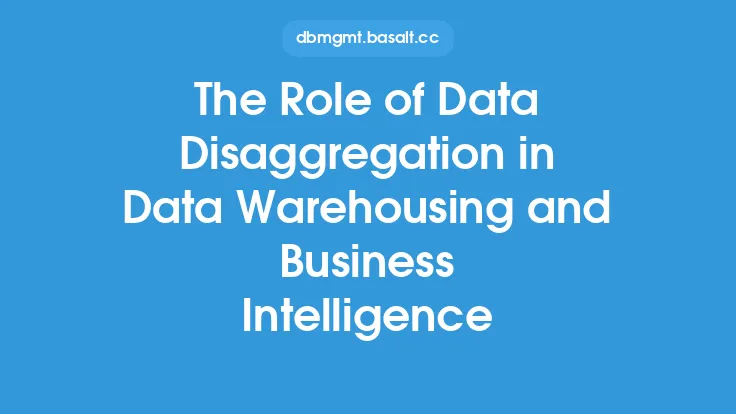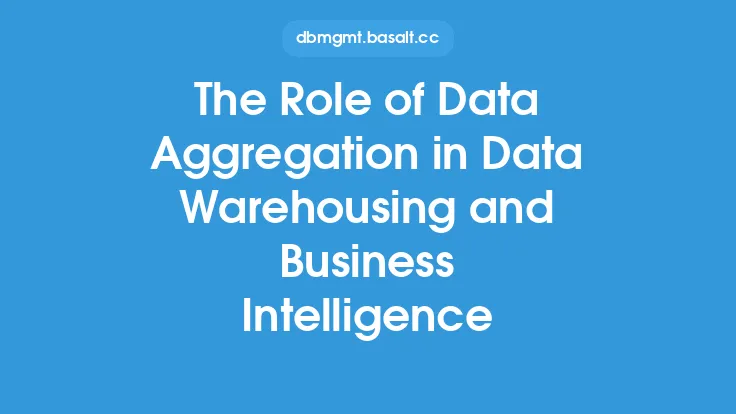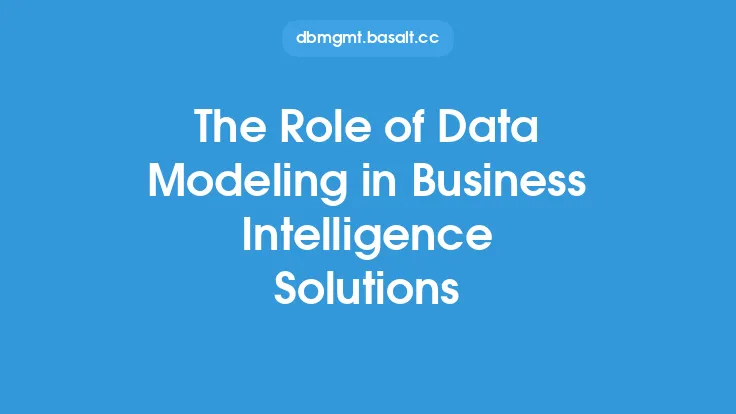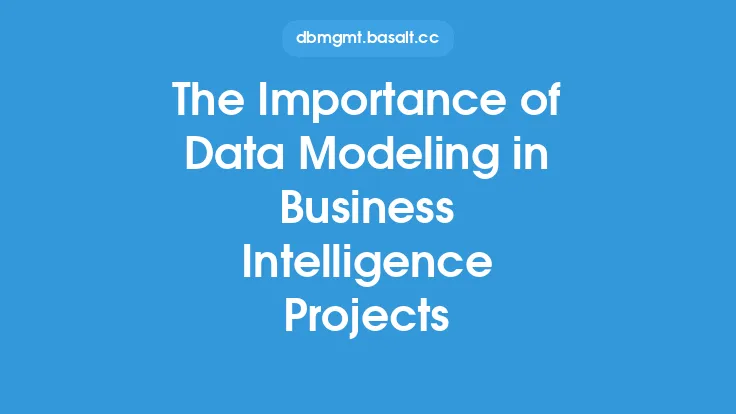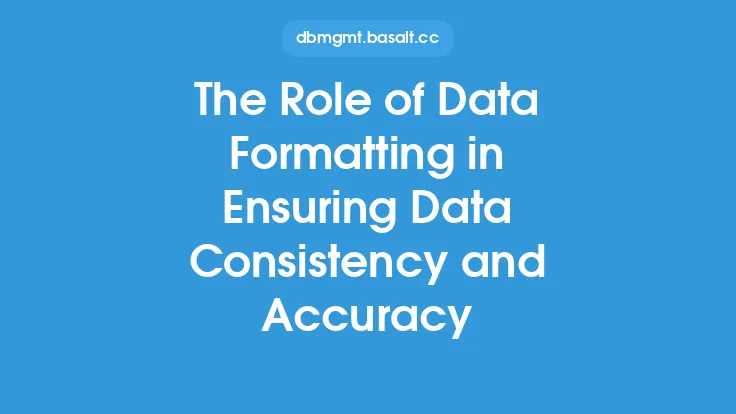Data transformation is a crucial process in the realm of data warehousing and business intelligence, as it enables organizations to convert raw data into a format that is suitable for analysis and decision-making. This process involves a series of steps that help to extract, transform, and load (ETL) data from various sources into a centralized repository, such as a data warehouse. The goal of data transformation is to create a unified view of an organization's data, which can be used to support business intelligence activities, such as reporting, analytics, and data mining.
Introduction to Data Transformation
Data transformation is a complex process that requires careful planning, execution, and monitoring. It involves a range of activities, including data profiling, data cleansing, data aggregation, and data formatting. Data profiling is the process of analyzing data to identify patterns, trends, and relationships, while data cleansing involves removing errors, inconsistencies, and duplicates from the data. Data aggregation involves combining data from multiple sources into a single, unified view, and data formatting involves converting data into a format that is suitable for analysis.
The Importance of Data Transformation in Data Warehousing
Data transformation plays a critical role in data warehousing, as it enables organizations to create a centralized repository of data that can be used to support business intelligence activities. A data warehouse is a database that is designed to store data in a way that makes it easily accessible for analysis and reporting. Data transformation is necessary to ensure that the data in the data warehouse is accurate, complete, and consistent, and that it can be easily integrated with other data sources. Without data transformation, data warehousing would be impossible, as the data would be in a format that is not suitable for analysis.
Data Transformation Techniques
There are several data transformation techniques that can be used to convert raw data into a format that is suitable for analysis. These techniques include data aggregation, data normalization, data denormalization, and data transformation using SQL. Data aggregation involves combining data from multiple sources into a single, unified view, while data normalization involves organizing data into a format that minimizes data redundancy and dependency. Data denormalization involves transforming data into a format that is optimized for querying and reporting, and data transformation using SQL involves using SQL statements to transform and manipulate data.
Data Transformation Tools and Technologies
There are several data transformation tools and technologies that can be used to support the data transformation process. These tools and technologies include ETL tools, data integration tools, data quality tools, and data governance tools. ETL tools, such as Informatica PowerCenter and Microsoft SQL Server Integration Services, are used to extract, transform, and load data from various sources into a centralized repository. Data integration tools, such as Talend and Oracle Data Integrator, are used to integrate data from multiple sources into a single, unified view. Data quality tools, such as Trifacta and DataFlux, are used to ensure that the data is accurate, complete, and consistent, and data governance tools, such as Collibra and IBM InfoSphere, are used to manage and govern the data transformation process.
Challenges and Best Practices
Data transformation can be a complex and challenging process, and there are several best practices that can be used to ensure that the process is successful. These best practices include defining clear requirements and goals, establishing a robust data governance framework, using automated tools and technologies, and monitoring and auditing the data transformation process. It is also important to ensure that the data transformation process is scalable, flexible, and secure, and that it can be easily integrated with other business intelligence activities, such as reporting and analytics.
Conclusion
In conclusion, data transformation is a critical process in the realm of data warehousing and business intelligence, as it enables organizations to convert raw data into a format that is suitable for analysis and decision-making. The process involves a range of activities, including data profiling, data cleansing, data aggregation, and data formatting, and requires careful planning, execution, and monitoring. By using data transformation techniques, tools, and technologies, and by following best practices, organizations can ensure that their data is accurate, complete, and consistent, and that it can be easily integrated with other business intelligence activities. As the amount of data continues to grow, the importance of data transformation will only continue to increase, and organizations that invest in data transformation will be well-positioned to succeed in today's data-driven economy.
